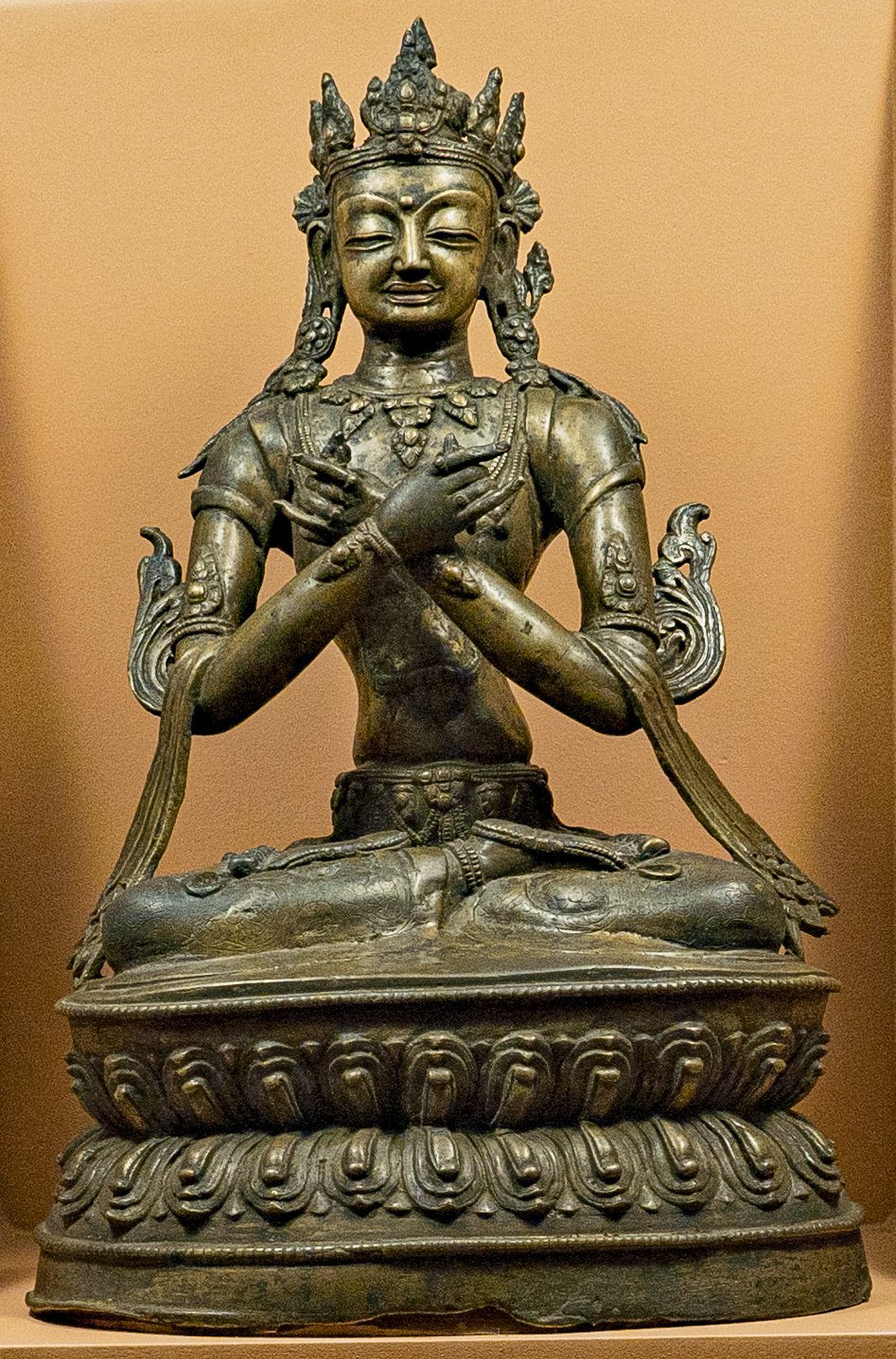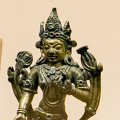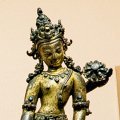Patan Museum (Nepal): photo 93
Photo 93 of 212 in Gallery: Patan Museum (Nepal)

Image title: Vajradhara (Tibet, 16th century)
Description of the photo
This Bronze sculpture shows an image of Vajradhara, from the 16th/17th century origination from Tibet.—Materials used: Bronze, silver and copper inlay.
Description: Vajradhara, “Holder of the Vajra,” displays bell and thunderbolt (vajra) in hands crossed before his breast in the embracing gesture. Bell and vajra have many meanings and are two of the most potent symbols of Vajrayana Buddhism. Although Vajradhara is a Buddha—often equated with Vajrasattva and Vairochana—he persists as a Bodhisattva to help others toward Buddha-hood.
Gallery information:
The Patan Museum is located on the Durbar square of Patan (Lalitpur/Lalitapura, Kathmandu, Nepal) which is associated Keshav Narayan Chowk (Keshavnarayan)—a form of Lord Vishnu. Being listed as a World Heritage Site, the whole of Durbar square is filled with exquisite temples, sculptures and other ancient structures, of which the ancient history history can be traced to the Malla Kings of Lalitpur. It is an important site for both Buddhism and Hinduism.
Photo details:
Date: 2019-12-02
Camera: SONY ILCE-6400
Exposure: 1/15
Aperture: f/4.5
ISO: 100
Focal length: 18mm
High resolution:
Download file
Size: 897.43 KB
Resolution: 947 x 1436
© Photograph by Gabe Hiemstra.
License: CC BY-NC-ND 4.0

